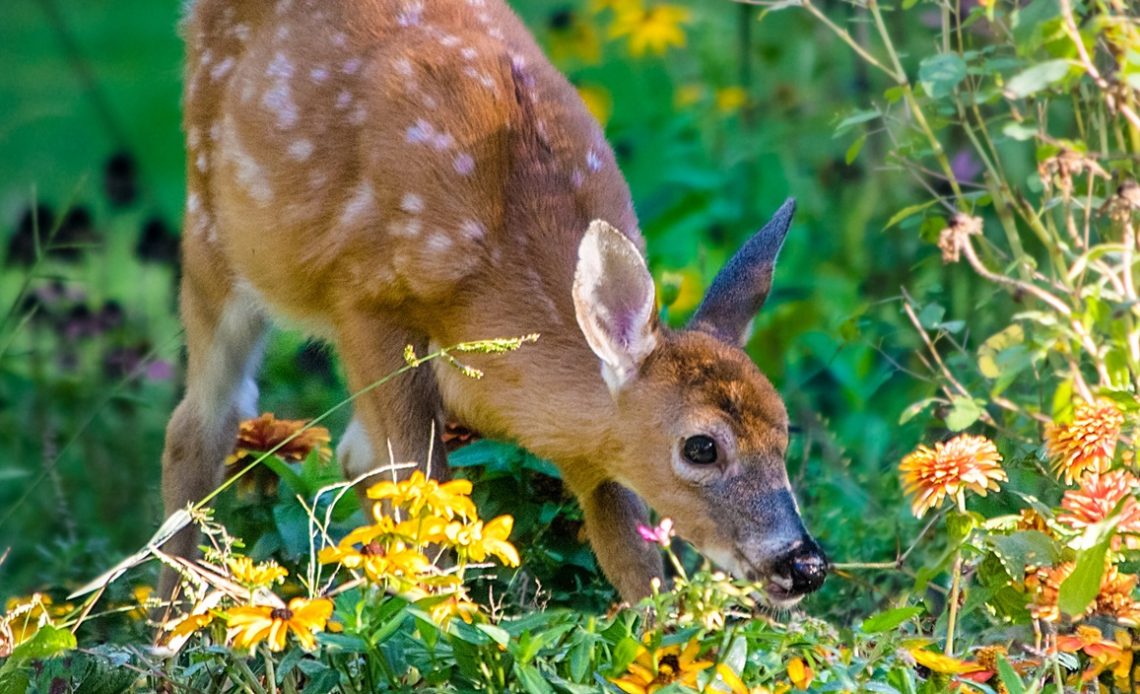

We’re here to help! Wild Yards is a completely free website that is 100% dedicated to helping you create a wildlife-friendly, sustainable yard. Read more
WildYards is reader-supported. When you buy a product through a link on our site, we may earn a comission. Every product is independently selected by our (obsessive) editors and our reviews are unbiased and objective. Read more about our mission or our privacy policy.
There’s nothing more frustrating than planting a flower garden only to have a herd of hungry deer storm in and eat it all down. If you want to beautify your backyard without sending an open invitation to the deer, you need to choose deer-resistant plants. Greenery like ferns and elephant ears are great for repelling deer, but what about flowering plants? Do deer eat marigolds?
Deer generally do not eat marigolds. The flowers have an unappealing fragrance, and their ruffled texture is rough on a deer’s sensitive mouth. While no plant is 100 percent deer-proof, marigolds consistently rank among the deer’s least favorite foods.
Why don’t deer like to eat marigolds?
Marigolds are intricate, summery flowers that come in shades of white, red, orange, and yellow. They look wonderful in windowboxes and raised flower beds. But for as pretty as they are, they don’t smell too good. Their strong aroma is off-putting to deer, and bees, too, who avoid this pollen-producing plant in favor of flowers with sweeter perfume, like lilacs.
Smell aside, marigolds aren’t very tasty, either. A food’s texture is a big deal for deer. They prefer foods that are soft and delicate, like native grasses and the new growth of hydrangea plants. Tender vegetation is sweet and juicy. It’s also full of valuable moisture that helps keep deer hydrated while they browse. Marigolds, by contrast, produce ruffled, stiff flowers and fibrous leaves that are fairly dry and tough to chew.
Of course, that doesn’t mean deer will never touch them. While marigolds are among the most deer-resistant plants, they’re still not completely immune to being nibbled by deer. In certain situations, deer may be compelled to eat your marigolds.
When do deer eat marigolds?
Deer are more likely to eat plants that are heralded as “deer-resistant” when there isn’t much else around for them to enjoy. During dry periods, periods of pest infestations, and periods of overgrazing, there’s not enough food to go around. As a result, deer are far more likely to start going through your backyard garden.
And, the fact is, some deer simply like the taste of deer-resistant plants, even though all the gardening books and professionals say they shouldn’t. Young deer, in particular, will chew on any green plant until they figure out which ones taste bad. Unfortunately, they can do some real damage before they decide which plants they like and which ones they don’t.
Do deer eat marigolds because they’re nutritious?
As ornamentals, marigolds receive a level of care that native plants don’t. Because of that, they can be a decent source of nutrition. These flowers are usually well-cared-for, getting water on a regular basis and sometimes even receiving an all-purpose fertilizer, which boosts their nutritional value.
Marigold flowers are naturally high in vitamin C. This crucial nutrient increases antioxidant activity, which helps boost the deer’s immune system. Marigolds are also a fair source of pollen and nectar, which provide deer with quick energy and protein.
Even though marigolds aren’t good enough to tempt bees, they do attract beetles and a few other insects. Deer may end up consuming these bugs along with marigold blossoms when they eat them. This can boost the plant’s protein content, if only inadvertently.
Which types of marigolds do deer like best?
When given a choice, deer prefer marigolds that don’t smell too strongly. White marigolds tend to have a mild fragrance, as do ‘Troubadour’ marigolds. ‘Lemon Gem’ marigolds have a nice fruity aroma that your local deer may develop a fondness for. The gently-scented ‘Signet’ marigold is delicate and floppier than the average marigold, so deer may like them as well.
All in all, deer don’t have a favorite variety of marigolds. If they do show any preference for marigolds, it’s usually for the ones that have just started to sprout up from the ground. Tender baby marigolds are far more palatable than mature ones. Deer like eating these seedlings best, if they get the chance.
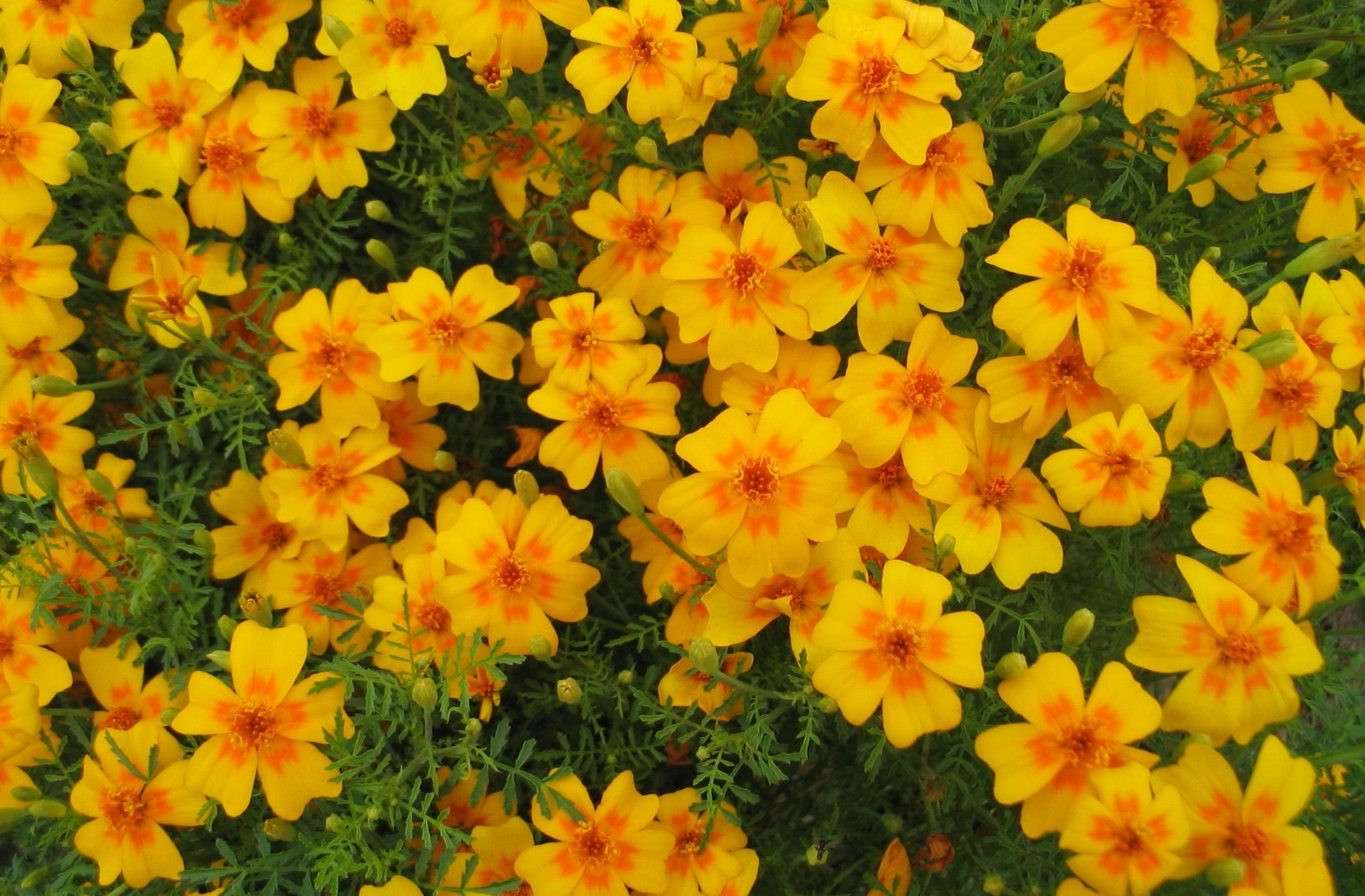
Which kinds of marigolds are most deer-resistant?
The stronger the smell, the less the deer will like your marigolds. These are bitter-tasting plants. And the most odoriferous among them tend to be the bitterest. French, African, and Aztec marigolds are the best choices for repelling deer. As it happens, these are also some of the easiest marigolds to grow, so if you’re new to gardening, you can’t go wrong with these varieties.
Purchasing grown marigolds from a local nursery can further aid in keeping the deer disinterested. If you’re determined to sow marigold seeds and watch them grow, place them inside in a warm, sunny location, where they’ll be safe from hungry wildlife until they grow to be big and tough enough to repel the deer.
Can you use marigolds for companion planting?
Yes, you certainly can! Because deer, rabbits, and most other animals are so repulsed by marigolds, that makes these flowers an excellent choice for companion planting. Planting your marigolds near more expensive ornamental plants can help keep the deer out of your backyard garden.
Grow your marigolds near petunias, daylilies, and other deer-favorite flowers. Marigolds make a wonderful border for flowerbeds, acting as a natural defensive barrier for your more expensive plants. Because marigolds are annuals, you’ll need to replace them every year. But they’re worth the extra effort because they can help you save a fortune on landscaping.
Marigolds have been a favorite companion plant of vegetable gardeners for centuries. Growing marigolds near tomatoes, okra, squash, and gourds, like pumpkins, will deter them from nibbling on your future food. Plant your marigolds close to your vegetables, so deer will come into contact with the bristly foliage the minute they start nosing around. This is the best way to keep deer off your vegetables.
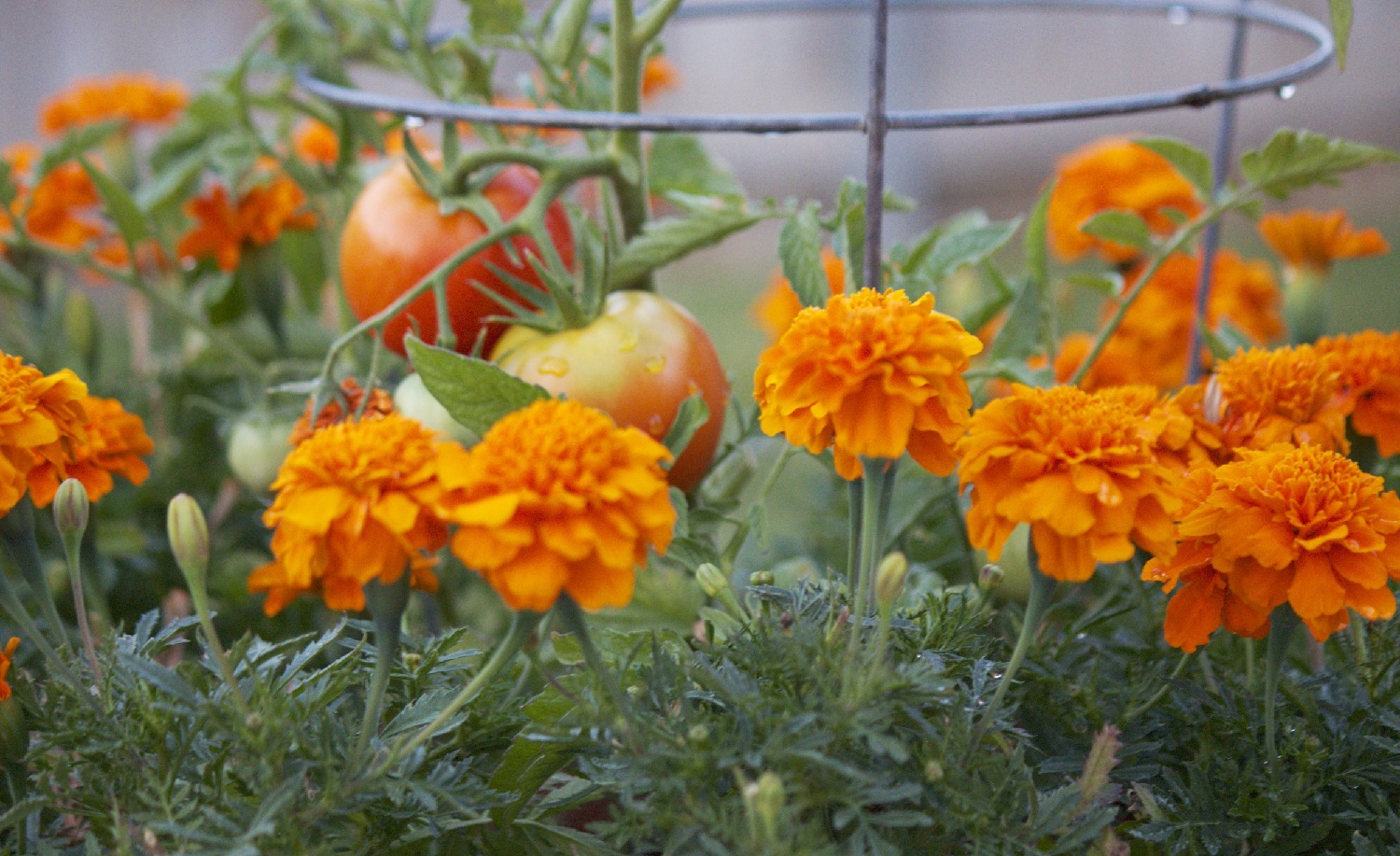
Are marigolds good for keeping other pests away, too?
If your backyard is overrun with insects, marigolds can help. Slugs, snails, aphids, spiders, mosquitoes, and flies all hate the smell of these flowers and will avoid them (that’s another reason why they’re so popular as companion plants). Try growing these flowers near entryways and windows to keep pesky bugs out of your home.
While marigolds are good for keeping all sorts of insects away, they can still fall prey to them if they aren’t taken care of properly. Marigolds that are planted too closely together, and marigolds that don’t receive enough water, are at risk of being eaten by spider mites.
To prevent your marigolds from succumbing to bugs, it’s important to take proper care of them. Plant your marigolds in a sunny location in moist but well-drained soil, and space adult plants 4 to 16 inches apart (place seeds 8 to 18 inches apart).
Water your marigolds regularly, once a week in the spring and two to three times a week in the summer. And avoid overhead watering. Getting the flower heads wet encourages fungal diseases and rot. Pour the water directly onto the soil to keep the foliage fresh.
How can you keep deer away from your marigolds?
If you find that, for whatever reason, the deer are grazing on your marigolds, don’t panic. There are still plenty of things you can do to get them out of your flower garden. Here are some of our favorite ways to deer-proof your backyard.
Install motion-detecting sprinklers
Deer are prey animals. They’re acutely aware of sudden movements and loud noises. These things trigger their “fight or flight” instinct. So focus on making your backyard unpredictable. The best way to do this is by installing motion-detecting sprinklers.
Because these sprinklers go off every time the deer come close, it won’t take long before they get the message. These sprinklers are designed with scaring deer in mind. They’re loud and unsettling, and many of them go off randomly, too, not just when things are moving around. This makes them even harder for the deer to figure out, so they’re more likely to just stay away.
Set up cat-eye lights
Deer don’t like to dwell in areas where they think predators are lurking. Again, as prey animals, deer are constantly on the alert because they never know when they’re going to need to flee. So setting up deer-scaring cat-eye lights in your shrubs or behind a tree is a great way to make them uncomfortable.
Deer spook easily, but they’re not dumb. They will observe a location for days to get a feel for the place and to see what’s what. If you leave your cat-eye lights sitting in the same spot for weeks at a time, they will get used to them. Soon, the deer won’t see them as a threat at all. So be sure to move your cat-eye lights to different spots around your yard. Repositioning them every other day is a good strategy.
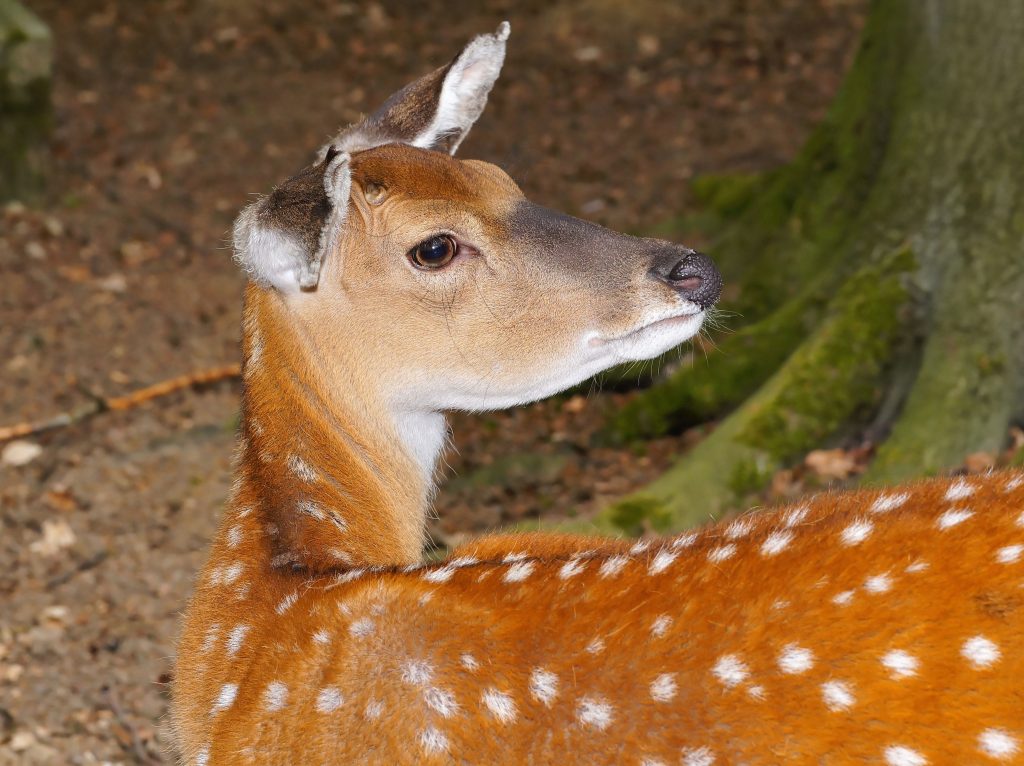
Use deer repellents
On their own, deer repellents are only so useful. But when used in conjunction with other deer-scaring measures, they can be tremendously helpful. Deer repellents have a strong smell and an unpleasant taste. Spreading these commercial repellents around your landscaping will encourage your local deer to find a meal elsewhere.
You can whip up your own deer repellent at home, too. Whisk and strain an egg, then dilute it in a gallon of water with some garlic or onion juice, some hot sauce, and a generous squirt of dish soap. This concoction won’t hurt the deer, but it coats the leaves of your young marigolds and ornamental plants so that when the deer go in for a bite, well, let’s just say they regret it real quick.
Some gardeners also add a dollop of non-toxic white glue, like Elmer’s. Unsurprisingly, this helps homemade deer repellents stick to flowers and leaves better. Just be sure to reapply this mixture after a top-down watering or heavy rain.
Make some noise
Depending on how flighty your local deer are, you may have some success keeping them away just by playing a radio at a low volume 24/7. This helps act as white noise, and because it could mask the growls or stalking sounds of a predator, deer are likely to avoid it.
If you do leave your radio running, choose music that is jarring and unsettling. Heavy metal, for instance. Just avoid jazz and classical music, as these mellow tunes aren’t likely to put the deer on edge.
Get a dog
Dogs enrich our lives with their unconditional love and companionship. They’re also fantastic for scaring hungry deer away. Keeping a dog in your backyard will let you know when the deer are nosing around your garden. It will also prevent them from sticking around too long.
And you don’t even have to get a big dog to scare the deer away. Chihuahuas are extremely territorial, and deer are too frightened of their incessant barking to realize that these pooches are too small to do them any real damage. Indeed, a teacup-sized Yorkie can send a full-grown buck running away, if it’s tenacious enough.
While we want to discourage you from getting a dog just to stick it in your backyard and patrol for pests, there’s no denying dogs are excellent for repelling deer. If your backyard is fenced and if you have some shady spots, letting your dog hang out outside can be very helpful in keeping the deer away from your marigolds.
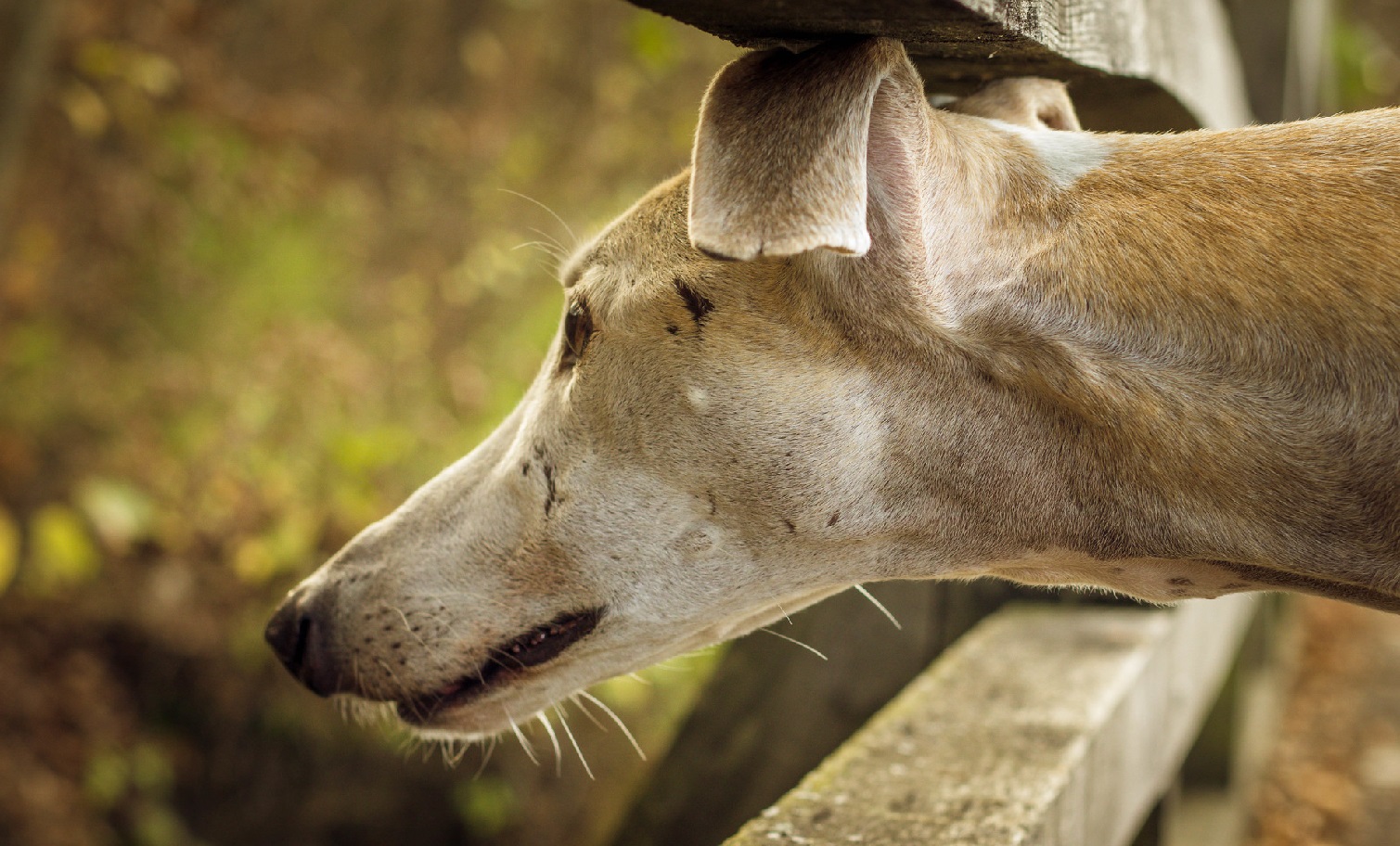
Decorate your space
Windchimes, whirligigs, and fountains are noisy and distracting enough to discourage deer from visiting your backyard. Decorating your vulnerable flowerbeds with some of these accent features is a great way to dress up your space and keep pests away.
You don’t have to fill your entire backyard with clutter. But having more of these accessories in your space will help confuse and frighten deer. If they’re too scared to step foot in your backyard, they’ll never get the chance to destroy your flowers.
Build a deer-proof fence
If all else fails, and if you have the extra money, consider installing a deer-proof fence. Deer have an impressive vertical leap, but they can’t bound over 8-foot-tall wire panels. They’re even less inclined to try to jump over solid wood privacy fences because they can’t see where they’re jumping to.
Unlike the other measures mentioned here, deer-proof fences have a 100-percent efficacy rate. As long as they’re in good repair, that is. Deer are clever creatures who will search wildlife fences for weak spots to push through. But as long as you take care of your fence, this is by far the best way to protect your landscaping.
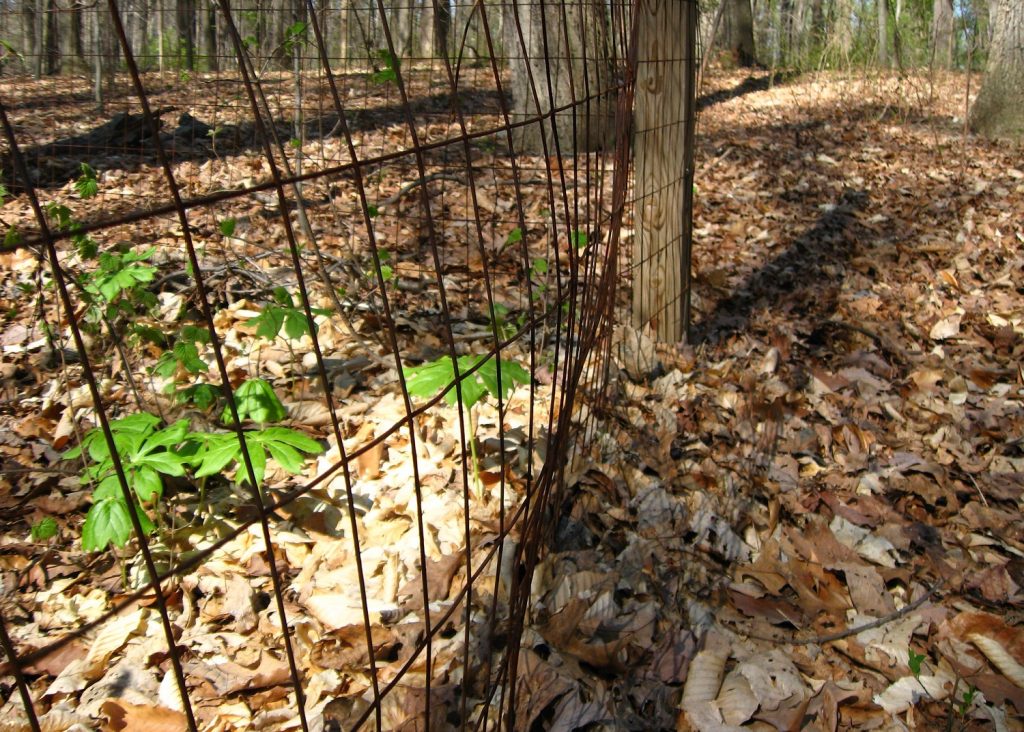
Which other flowers do deer hate?
Do deer eat marigolds? For the most part, no. But these smelly flowers aren’t the only plants that deer hate. If you want to deer-proof your garden as much as possible, plant your marigolds with these other deer-resistant plants.
Vinca
Fragrant and bitter-tasting, vincas are poisonous to deer and other mammals, so they’re very hardy in terms of wildlife resistance. These tropical-looking blooms come in various colors, including white, red, pink, and purple. Vincas grow into short mounding shrubs that are perfect for adding a dash of color to your flowerbeds.
Lavender
Rich in potent essential oils, lavender’s foliage is as fragrant as its flowers, and deer hate every part of it. This plant thrives in sandy soils where it can receive full sun. It’s also extremely tolerant of drought conditions, going weeks at a time without a drop of water. Lavender is seldom palatable to deer, even when it’s young. Grow this aromatic herb near your marigolds and other ornamentals to keep them safe from the deer.
Poppies
Another poisonous plant, poppies can cause gastric distress in deer if they consume too many of them. These flowers are nutritionally deficient, so deer have no real reason to crave them. Although, when food is hard to find, deer may nibble on a few poppies before finding something else. Typically when deer do damage poppies, it’s not because they eat them, but rather because they like to bed down and roll in them. So consider growing your poppies in raised beds, where deer aren’t likely to squish them.
Peonies
These luscious flowers produce tons of nectar and a deliciously sweet aroma that’s to die for. Yet despite all this, deer are not attracted to peonies. So growing these flowers in your deer-resistant garden next to your marigolds is a wise decision. Besides, even though peonies aren’t popular with deer, they’re extremely attractive to bees, butterflies, and other hungry insects that can benefit your whole garden.
Winter Aconite
This flowering bulb adds some color to your deer-resistant garden in the early weeks of spring. Featuring yellow cup-shaped flowers centered among circles of green leaves, winter aconite acts as an early food source for hungry bees. These eye-catching flowers are closely related to buttercups. They’re perennials, too, so you only have to plant them once and they’ll help keep the deer away for years.
Ultimately, the answer to the question “do deer eat marigolds?” is, yes, but rarely. As a rule, deer do not care for these stinky, tough flowers. If the deer are eating your marigolds, planting them near other flowers that deer are known to hate, and employing a few extra deer-scaring measures, can help keep them safe so you can continue to enjoy their cheerful blooms.
